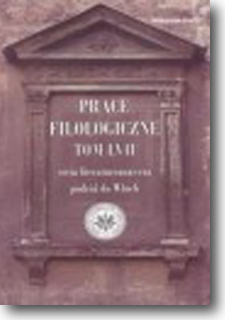Niedźwiedzie ikony narodowe
Buddy bears as national icons
Author(s): Jerzy FarynoSubject(s): Language and Literature Studies
Published by: Wydział Polonistyki Uniwersytetu Warszawskiego
Keywords: United Buddy Bears; ikona narodowa; United Buddy Bears; national icon
Summary/Abstract: While huge herds of painted fiberglass cows of {Cow Parades} (first edition as {Country Side in View} took place in Zürich 1998 - idea by Walter Knapp, cow models by sculptor Pascal Knapp; since 1999 till today more then 60 cities and countries have organized their own {Cow Parade} [Chicago 1999, London 2002, Ventspils 2002, Prague 2004, Bratislava 2005, Moscow 2005, Warsaw 2005, Barcelona 2005, Tokyo 2006, Melbourne 2006, Edinburgh 2007, Istanbul 2007, Taipei 2008, Madrid 2009, San Jose in Costa Rica 2009]) represent cows as such, they are different everywhere and show artistic inventions of mainly local artists, the bears of international action {United Buddy Bears} (first exhibition - Berlin 2002/2003; authors of the project - Eva Herlitz and Klaus Herlitz) are not bears at all, even the Russian or German ones. Of course, their figures are bear-shaped and they look like huge bears (2,2 m tall), but all of them are similar and they stay the same during their travel round the world (2004 - Hong Kong, Istanbul; 2005 - Tokyo, Seoul; 2006 - Sydney, Vienna, Berlin again; 2007 - Jerusalem, Cairo; 2008 - Stuttgart, Pyongyang, Warsaw; 2009 - Buenos Aires, Montevideo). Each one of them is painted by one artist, and represents the artist and his/her country. Even more, while the cows have their names, which usually are their semantics (like Slovakian {Ta-Kravata-Ta}, Czech {Hemenex, Alchemicow, Arcimbolda, Couluflower}, Austrian {Moozart}, Scottish {The Three Grazers}, Polish {Biedronka, Cowstelacja Domuuuwka, Wars-Sawa}, Mexican {Bailarina, Precolombina, Frida Cawlo, Tacow, Vacas Lechera, Victoria Alada}, Russian {Chasovaya} [as located next to Red Square ‘clock cow’ and ‘guard of honour cow’], {Golden Byzantyne, Threeheaded, VIP-Corova}), the bears have no such names - their names are simply the names of their countries (Albania, Armenia, Austria, Azerbaijan, Belarus, Georgia, Israel, Japan, Lithuania, Kazakhstan, Poland, Portugal, Russia, Slovakia, Sweden, Ukraine, USA, Yemen, Zimbabwe). It means that image on the bear’s body is both - an icon of the bear’s/artist’s country and the artist’s visual and semantic conceptualization of this country. In my planned book I analyse much more bears, but here just a few of them (from Czech Republic, Georgia, Armenia, Sweden, Azerbaijan, Poland, Slovakia and Austria). First of all I analyse circle structure and alphabetical order of the {Buddy Bears} action, which depends on the urban conditions (Zamkowy Square in Warsaw was too small for 142 bears and not so round, therefore planned circle had to be in some way opened and became a spiral line). The meaning of alphabetical order one can notice only knowing the names of the countries in other languages and seeing radical disagreement between this order and his/her geographical mental map - then it sounds according to the main idea of the action {United Buddy Bears: ‘each of places and each of neighbours are equal’}. Georgian and Armenian bears represent their c
Journal: Prace Filologiczne
- Issue Year: 2009
- Issue No: 57
- Page Range: 67-92
- Page Count: 26
- Language: Polish

